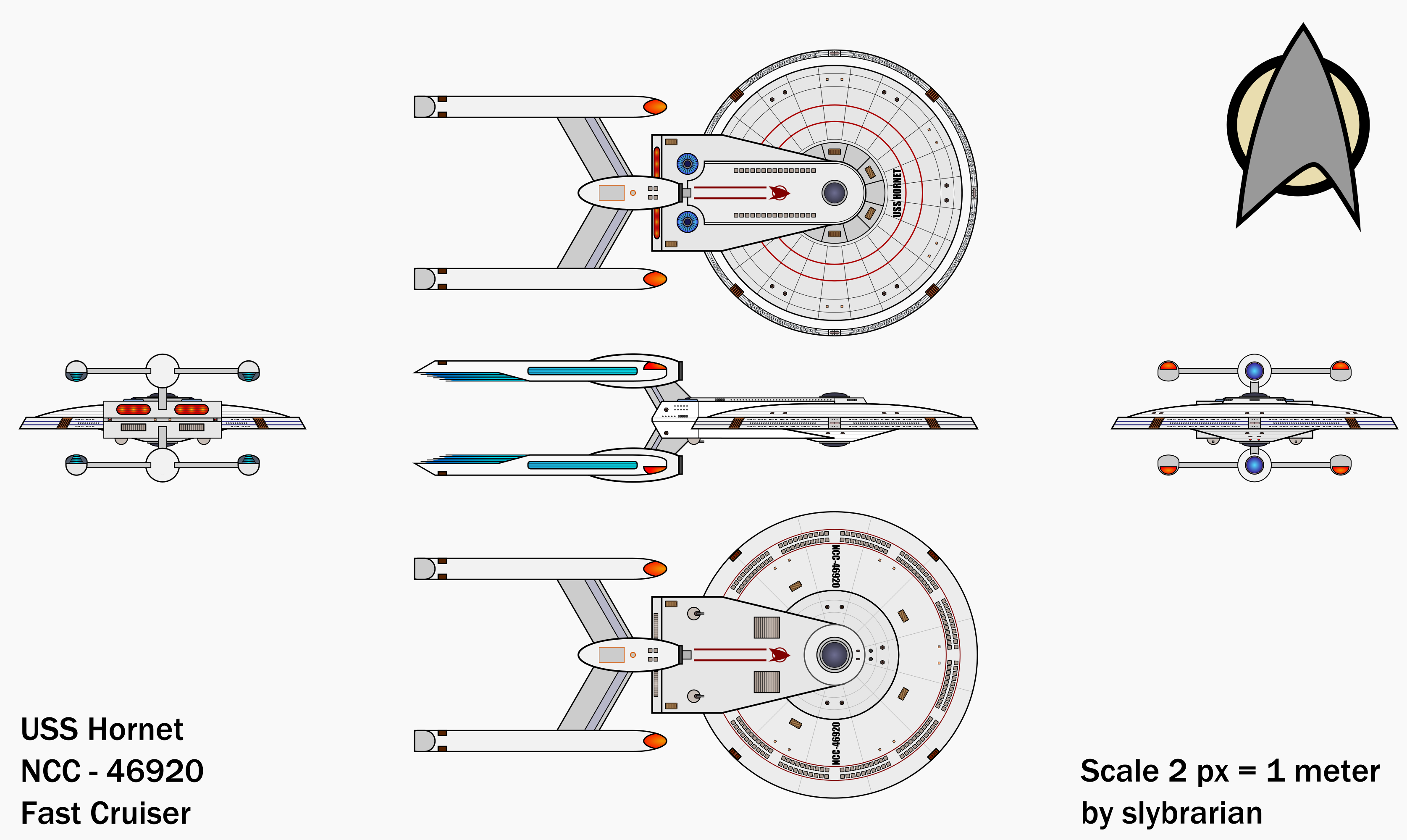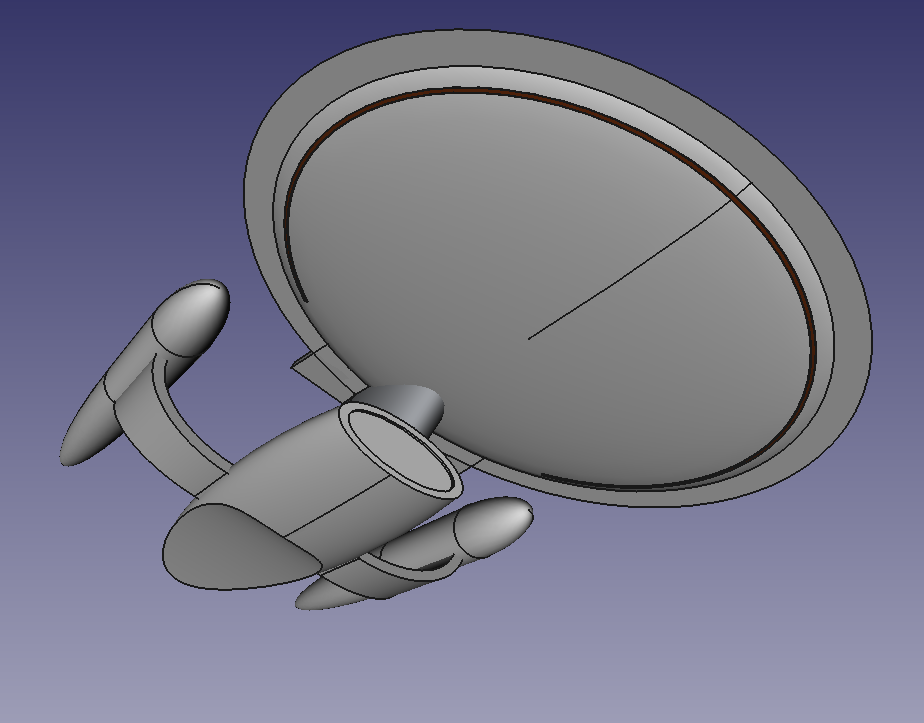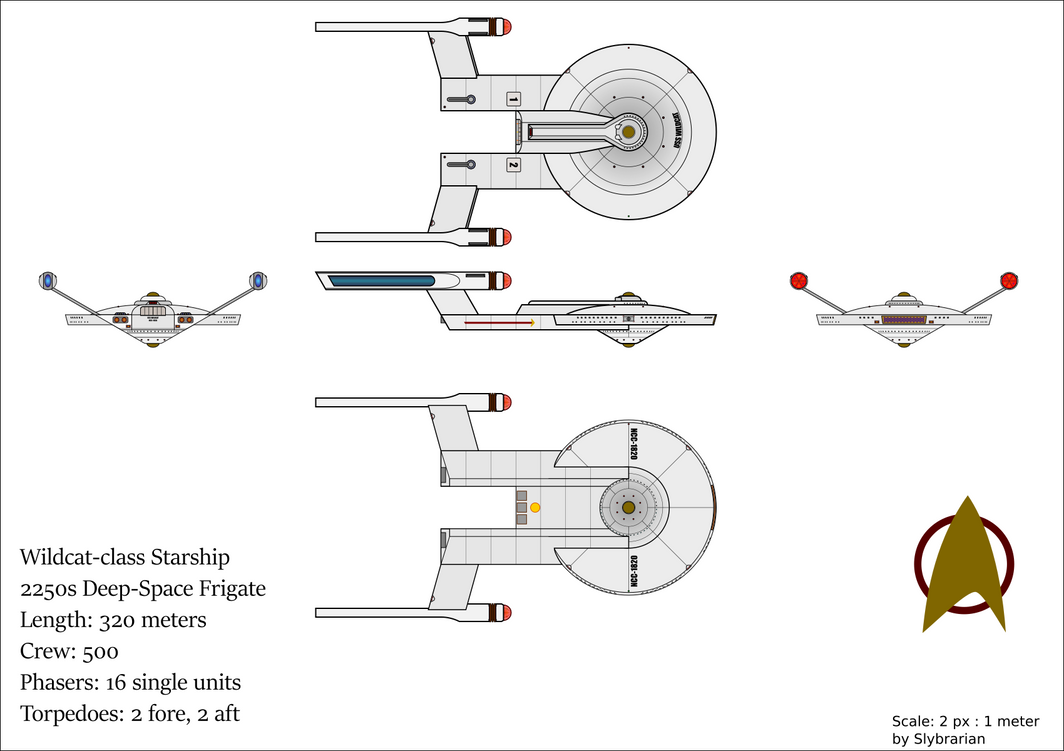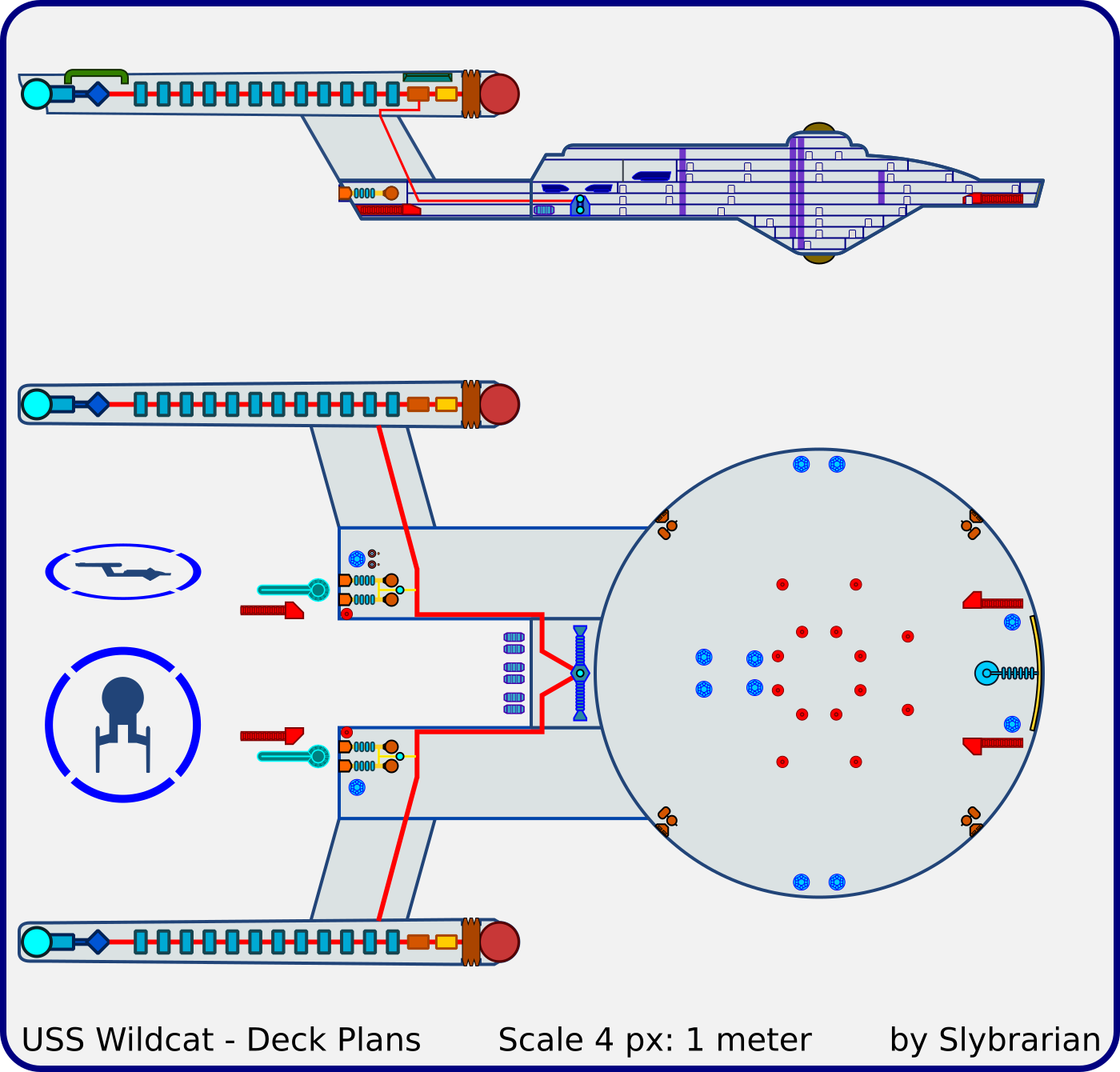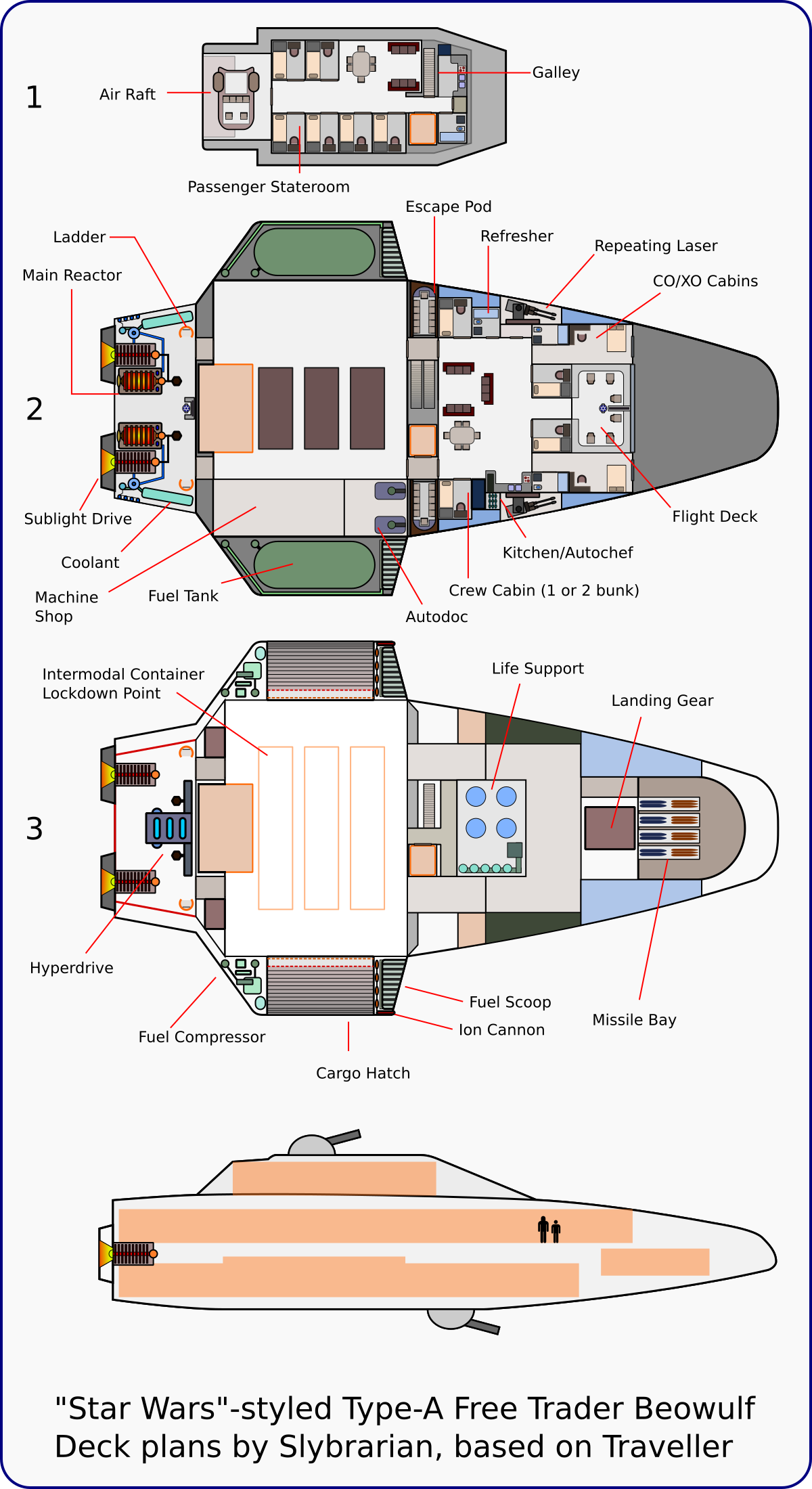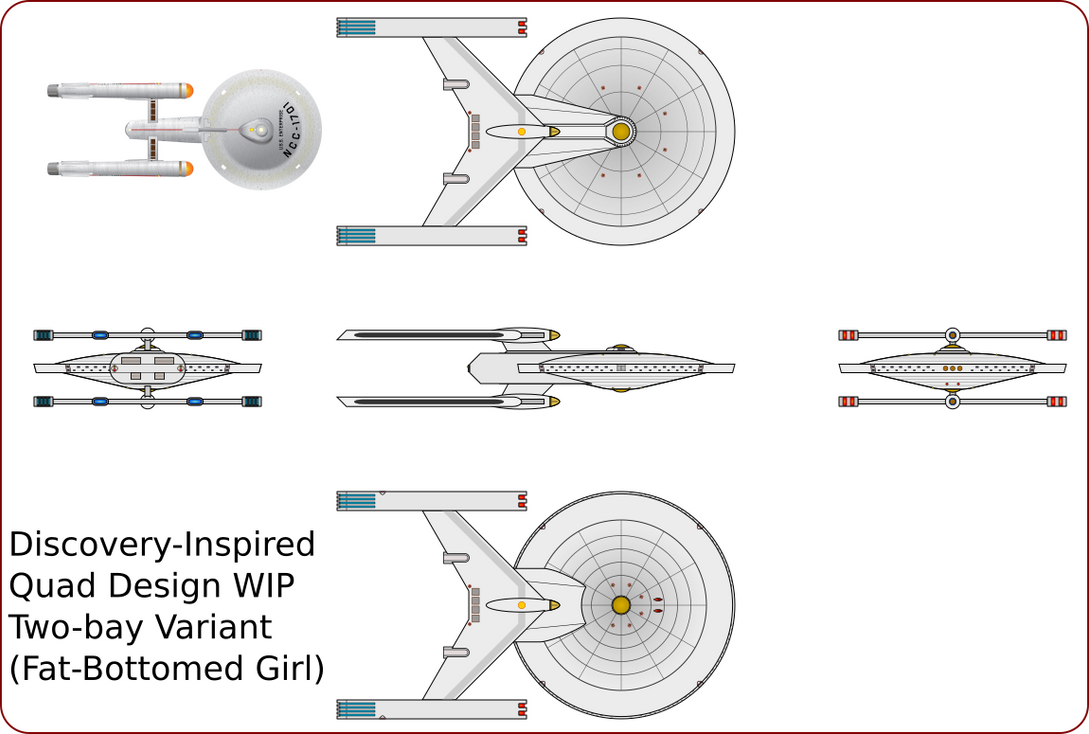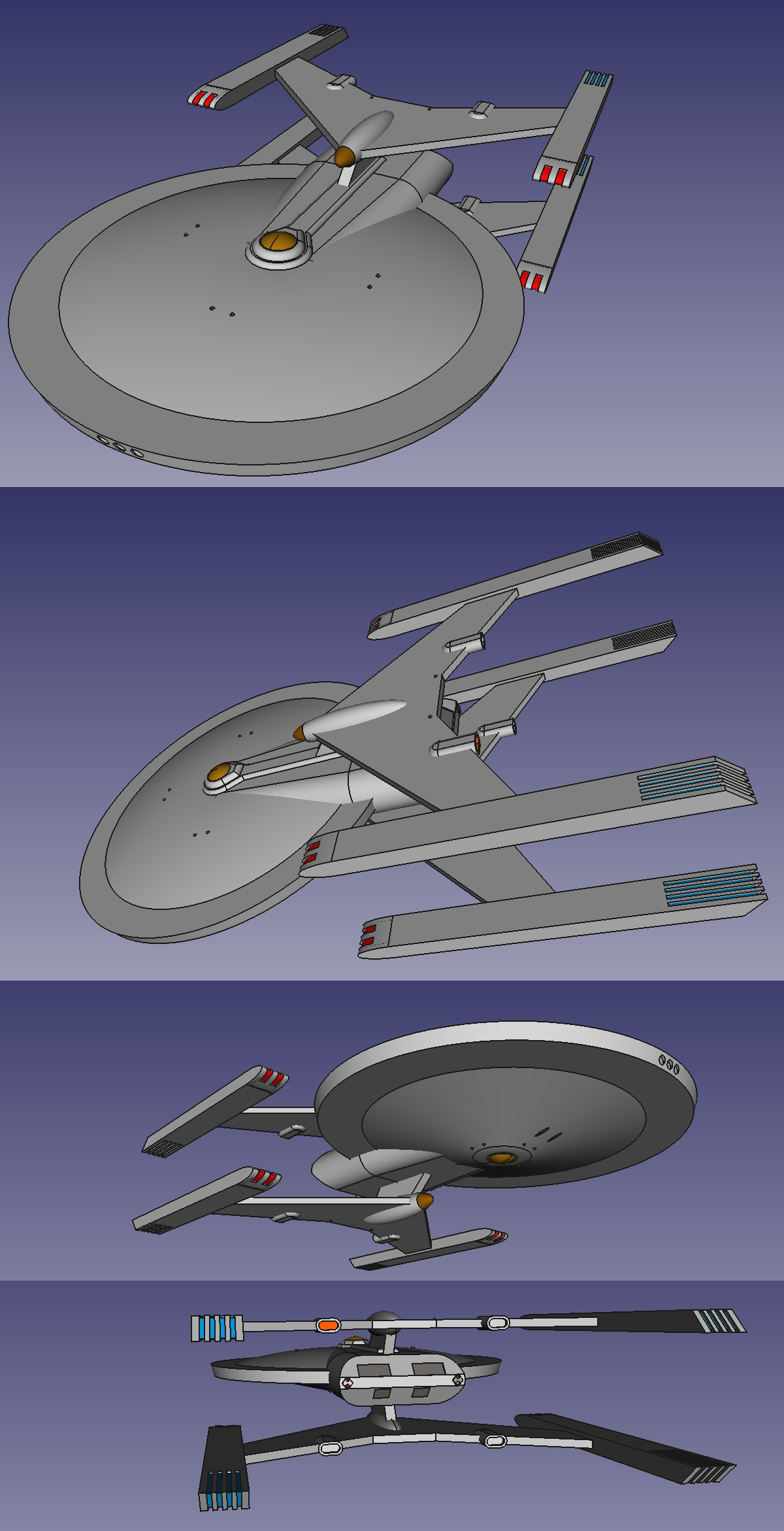Thanks! Here's the last Starfleet one I currently am working on.
Length: 320 meters
Beam: 184 meters
Depth: 61 meters
Cruise Speed: Warp 6.5
Flank Speed: Warp 7
Emergency Speed: Warp 8
Armament:
Phasers: 16x Type-VIII Single Mounts
Torpedos: 2x Forward, 2x Aft
Tractor Beams: 4
Crew: 500
Passengers: 20
Emergency Limit: 1100
Description
The Wildcat-class is a Starfleet frontier frigate. Based on successful designs such as the NX explorer and Loknar-class heavy frigate, it is intended to be a general-purpose frontier starship. It has sufficient fuel capacity and self-sufficiency systems to spend long periods of time operating without the support of a major fleet base, along with the science labs to remain useful when not engaged in peacekeeping or humanitarian missions.
Initial design work began in 2240 at the Cochrane-Fuchida Propulsion Lab in Schiaparelli City. While the team eschewed using existing hull frames, as was done with several of the other 'Class One' starships produced by the San Francisco Fleet Yards, existing internal parts were sourced wherever possible. To reduce hull stress and simplify construction, the ship was designed with a modified single-hull configuration, removing the separate engineering hull of most cruisers in favor of a split catamaran hull to house fuel and cargo space while extending the warp nacelles out to a high-efficiency position. Total hull volume was comparable to that of other similarly-sized ships such as the Constitution, Avenger, and Coronado classes. Warp power was provided by a horizontally-oriented reactor between the catamaran hulls, feeding two LN-series warp nacelles. Impulse power was provided by engines at the rear in two sets. Because of the positioning of the warp drive, the power conduits were routed past just forward of the impulse system. This allowed warp plasma to be routed up to the impulse field spine above the thrusters, tying the two power system together. This idea would later be more widely incorporated in other ships.
For armament, the Wildcat has two forward and two aft photon torpedo tubes, with a total of two hundred and twenty ready missiles and the facilities to construct replacements. These are backed by sixteen phaser units, driven by eight generator banks. The phasers are spaced so that at least two can be brought to bear on any point around the ship, and in most directions more are visible. Any given pair can also channel the full power of the ship's reactors. The ship was also fitted with the same deflector shield system as the Constitution-class, with the compact shape giving it a stronger field perimeter. Battle simulations indicated it could generally match a pair of D-7 battlecruisers, although three posed a serious threat. Outside of combat, the traditional 'dish' style scanner/deflector was replaced with a phased-array system at the bow.
In response to complaints about the limited hangar space of the Loknar-class, the Wildcat was fitted with an extended hangar superstructure with space for up to five Class F shuttles plus an additional cargo or aqua shuttle, as well as ten work bees. Two cargo bays were positioned in the catamaran hulls, with upward-opening bay doors. In order to save cargo space for mission purposes, the Wildcat was one of the earliest ships to use transporter-based fabricator-defabricator systems from day one. These systems, first outfitted to the Constitution-class exploration refit in , were able to work much faster than traditional nano-assemblers and machine shops, while also storing raw materials in a more compact form. This greatly expanded the ship's self-sufficiency.
First Run Class Members:
USS Wildcat NCC-1820
USS Dauntless NCC-1821
USS Corsair NCC-1822
USS Avenger NCC-1823
USS Vindicator NCC-1824
USS Liberator NCC-1825
USS Catalina NCC-1826
USS Hellcat NCC-1827
USS Devastator NCC-1828
USS Seafire NCC-1829
Mission Adaptable Mass
A variant of the Wildcat-class was redesigned for greater mission adaptability. The structural frame was reinforced where the warp nacelle pylons met the catamaran hulls, making an hardpoint where a lower set of pylons could be added or removed as needed. These pylons met at a standardized transport-tug attachment plate. In theory, this lower pylon could be easily swapped at a starbase in less than thirty-six hours. In practice, this was rarely done and ships would retain the pylon for long periods between maintenance stops.
The main benefit of the plate was the ability to carry a large variety of external pods already in service. While a small number of photon torpedo and sensor packages were constructed, the majority of the time this meant a standard 100- or 200-meter transport cylinder. These could be anything from a cargo container or fuel tanker to an orbital lab or starbase component to a self-contained impulse-capable battalion dropship.
Naturally, adding such a large amount of mission-adaptable mass came with drawbacks. Even empty, pylon degraded warp efficiency and obstructed the lower-aft phasers dead astern. A full container reduced speed and range even further. However, this was an acceptable tradeoff in areas where even a Class 1 transport/tug could not adequately defend itself, such as some frontier areas and hot drop zones. The ability to detach the pod on arrival and regain almost full combat capability proved very useful, both in police actions and in quickly establishing a permanent presence over valuable planets.
Nacelle Upgrade
Another variant of the Wildcat came as Starfleet experimented with upgraded nacelles, which would eventually lead to those used by the refit Constitution and Miranda classes. Based in part on the Klingon Graf-2 nacelles, the traditional circular warp coils were replaced with a flatter version, although this model retained the large forward space-sink and rampscoop coils.
Design Notes
The working title was "I Can't Believe It's Not A Loknar". I wanted a TOS-era ship that was distinct from most of the usual suspect and I always liked that design in principle, but there were some things I wanted to tweak about nacelle positioning and the lack of a proper shuttlebay. The hanging deflector was silly too. The phaser layout is not the two-weapon banks seen with the TMP design and backwards-ported on so many fan various of the Connie. It actually has the same number of actual weapons but they are spaced in a way that it could do the classic two-beam shot. Torpedoes got moved up to the front of the saucer, though, because even with a very small tube and an expanded hull there simply isn't much space to stick them on the lower saucer, like I did with the Hornet, and I didn't want to Franz Joseph them up to the top under the bridge because there's not much space there either. All windows line up with my preliminary deck plans, to be posted later.

